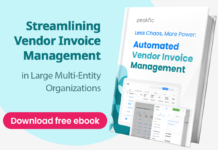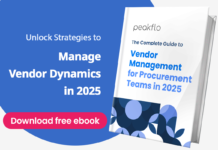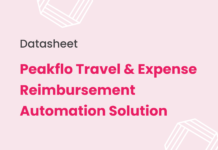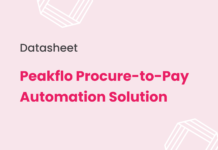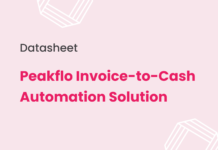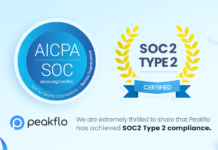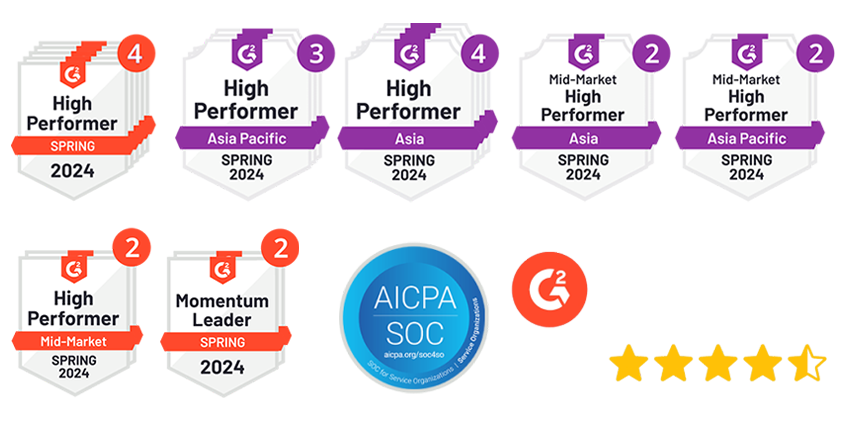Agentic automation represents a significant shift in how businesses handle complex operations. The market is projected to grow from $7.28 billion in 2025 to $41.32 billion by 2030, reflecting a compound annual growth rate of 41.48%. This isn’t just another technology trend – it addresses fundamental limitations that have long frustrated business leaders dealing with traditional automation systems.
Traditional rule-based systems require constant updates and struggle with unexpected scenarios. Agentic automation uses AI-powered agents that work autonomously to perform tasks as a human would. These intelligent systems can think, learn, and make decisions independently, adapting to change as it happens without manual updates by human workers. According to Gartner, by 2028, 15% of day-to-day work decisions will be made autonomously, with agentic AI in place.
The impact on businesses is substantial. 91% of companies say using AI boosts their revenue growth, while Gartner predicts that by 2029, agentic AI will autonomously resolve 80% of common customer service issues, leading to a 30% reduction in operational costs. This new era of automation enables AI-powered systems to handle increasing volumes of tasks without additional human resources.
Understanding agentic automation and knowing how to implement it effectively is crucial for maintaining a competitive advantage in today’s business environment. This guide covers everything you need to know about agentic automation – from basic concepts to practical implementation strategies that can improve your business operations in 2025 and beyond.
Understanding the Shift: From RPA to Agentic Automation
Image Source: Data Management Blog
The automation landscape has evolved dramatically over the past decade. Organizations began their automation journey with robotic process automation (RPA), which leveraged software robots to perform repetitive, rule-based activities and tasks. This approach served as the foundation for automating structured processes but had clear limitations when facing complex business challenges.
Limitations of rule-based automation
Traditional RPA excels at handling structured data and following clear instructions, making it ideal for routine, predictable processes. However, rule-based automation faces several critical constraints that limit its effectiveness:
- Rigid adaptability: RPA operates on scripts and rules, making it inflexible when adapting to new or unexpected scenarios. If an input or process deviates from predefined parameters, the system may fail or require manual intervention.
- Limited decision-making: Rule-based systems execute tasks based on fixed rules and predefined conditions, lacking the ability to interpret broader contexts.
- Complexity management: As the number of rules increases, the complexity of managing and maintaining these rules grows exponentially, affecting system performance and creating potential rule conflicts.
- Structured data dependency: RPA struggles with unstructured data and complex workflows that lack clear processes.
How agentic automation fills the gap
Agentic automation emerges as the next evolutionary step, enabling software ‘agents’ powered by large language models, generative AI, and large action models to take autonomous action. These agents can perceive their environment, reason about it, and formulate and execute actions to achieve specific goals without requiring humans to structure and direct their work.
The key advantages of agentic automation include:
- Context-aware decision-making: Agentic automation can analyze unstructured data, recognize patterns, plan actions, and make decisions autonomously.
- Adaptability to change: Unlike RPA, agentic systems can learn from data and interactions, adjusting workflows on the fly and remaining resilient in dynamic environments.
- Complex task handling: Agentic automation can now optimize complex, unstructured processes that traditional rules-based automation can’t address by itself.
Agentic process automation vs AI-powered automation
Although related, agentic process automation represents a distinct advancement beyond AI-powered automation. AI-powered automation (sometimes called ‘intelligent automation’) gives advanced AI skills to software robots, handling tasks like understanding document content and extracting data. Agentic automation introduces a layer of true autonomy, reasoning, and self-correction.
The primary distinction lies in how these systems operate:
- AI-powered automation extends RPA with cognitive capabilities like machine learning and natural language processing, allowing it to process unstructured data and make data-driven decisions.
- Agentic automation moves to a new level of autonomy where agents analyze environments, make independent decisions, and adapt their approach based on goals rather than fixed instructions.
This evolution represents a significant shift from simply following rules to systems that understand broader goals, reason through situations, and adapt their strategies to achieve desired outcomes.
What is Agentic Automation?
Agentic automation refers to AI-driven processes where autonomous AI agents make decisions, take actions, and coordinate tasks with minimal human intervention. These intelligent systems leverage core components such as reasoning, planning, and tool use to execute complex workflows efficiently. They act as software programs designed to achieve specific goals independently, much like highly skilled virtual employees that can adapt and learn over time.
The technology combines large language models (LLMs), generative AI, and large action models (LAMs) to create systems that can perceive their environment, reason about it, and formulate actions to accomplish objectives. These agents don’t simply follow instructions—they actively break down business processes, adapt dynamically, and refine their actions through experience.
How does it differ from traditional automation?
Traditional automation systems like robotic process automation (RPA) follow predefined rules and design patterns. These conventional approaches perform well on structured, repetitive tasks because they operate in a linear, static way. They struggle with unstructured data and tend to break down when faced with change.
Agentic automation follows a more flexible approach where it:
- Understands instructions in plain language and adapts to different situations seamlessly
- Makes decisions and completes tasks autonomously without constant supervision
- Plans are intentionally set by setting goals and designing strategies to achieve them
- Anticipates potential problems and modifies actions accordingly
- Improves through self-reflection, learning from previous actions
Agentic automation, meaning in simple terms
Think of agentic automation as having a smart assistant rather than just a tool that follows pre-programmed rules. Instead of requiring exact instructions for every scenario, these systems can figure things out independently, reducing the need for constant updates.
Peakflo offers a highly intelligent, self-improving automation platform for finance and operations—covering everything from invoice-to-cash to procure-to-pay—augmented with autonomous voice agents that streamline routine communication. This empowers finance and operations teams to reclaim hours, boost accuracy, and focus on strategic work.
Much like having a capable team member, agentic automation can analyze information, make informed decisions based on available data, and take proactive action without waiting for human instructions. This capability allows businesses to automate processes that were previously too unpredictable or complex to be handled by machines. Organizations can now fully automate complex end-to-end workflows and address the “long tail” of processes that, until today, were not automatable.
How Agentic Automation Works
Image Source: Translucent Computing Inc.
Behind every intelligent, agentic automation system lies a sophisticated framework that powers its capabilities. Understanding this operational architecture helps you appreciate how these systems deliver their impressive results.
1. Data collection and integration
Agentic automation begins by gathering information from diverse sources—both structured data from enterprise databases and unstructured data from emails, documents, and social media. This creates a unified information pool that AI agents can access. Using large language models (LLMs) and natural language processing (NLP), the system interprets and integrates this data to form a comprehensive foundation for decision-making.
The process starts with identifying all relevant data sources within your organization. These systems can pull information from ERP systems, customer databases, email communications, and even social media interactions. Once collected, the data goes through a standardization process where different formats are converted into a consistent structure that AI agents can work with effectively.
2. Context-aware decision-making
At the core of agentic automation is intelligent decision-making. AI agents analyze the collected data using machine learning algorithms to identify patterns, trends, and anomalies. These agents then apply both predefined rules and adaptive algorithms to make informed choices based on background information and real-time inputs. This contextual awareness enables them to assess situations, prioritize tasks, and determine appropriate responses without constant human guidance.
The decision-making process involves several key steps: data analysis, pattern recognition, risk assessment, and action planning. Unlike traditional systems that follow rigid rules, these agents consider multiple variables simultaneously and adjust their approach based on the specific context of each situation.
3. Task execution and orchestration
Once decisions are made, agentic automation moves to execution. The system coordinates with applications and APIs to implement actions in the correct sequence. This orchestration capability ensures different components work together seamlessly—whether they’re AI agents handling complex tasks, RPA robots performing repetitive actions, or humans providing oversight.
Agentic Workflows cover a wide range of use cases: accounts payable (PO-matching, vendor onboarding), AR (invoice submission, cash application), anomaly detection, approvals, and expense management.
4. Real-time adaptability
During execution, agentic systems continuously monitor for unexpected scenarios or changing conditions. If something unforeseen occurs—like a data error or processing delay—the agents adjust immediately to maintain workflow progress. This dynamic responsiveness makes agentic automation particularly valuable in fast-changing business environments where conditions evolve rapidly.
The system maintains constant awareness of its environment, tracking performance metrics and identifying deviations from expected outcomes. When exceptions occur, agents can either resolve issues autonomously or escalate them to human operators while continuing to process other tasks.
5. Continuous learning and optimization
Perhaps most importantly, agentic automation doesn’t remain static. Machine learning models continually refine algorithms based on new data and outcomes. Through mechanisms like reinforcement learning and self-supervised learning, agents evaluate past performance, gather feedback, and improve their strategies over time. This self-improvement capability enables the system to handle increasing complexity and respond to evolving business needs.
The learning process happens at multiple levels: individual agents improve their task-specific performance, while the overall system optimizes workflow coordination and resource allocation. This continuous improvement ensures that the automation becomes more effective over time without requiring manual updates or reprogramming.
Key Benefits for Modern Businesses
Image Source: Exotel
Modern businesses face unprecedented challenges in today’s fast-paced environment. Managing complex workflows, making rapid decisions, and controlling operational costs have become critical for survival. Agentic process automation offers significant advantages that directly address these challenges, helping organizations stay competitive and agile.
1. Improved decision-making speed and accuracy
Agentic process automation significantly enhances decision-making through real-time data analysis, identifying patterns and predicting outcomes with greater precision. These systems analyze vast amounts of information at speeds impossible for humans, spotting trends that would otherwise remain hidden. The decision-making process isn’t static—it’s adaptive and context-aware, continuously improving through learning. By 2028, Gartner predicts that 15% of day-to-day work decisions will be made by agentic AI, demonstrating growing confidence in its reliability.
2. Scalability of complex workflows
Traditional automation solutions struggle when business operations evolve. Agentic automation adapts seamlessly as companies grow and change. This inherent flexibility allows organizations to expand and manage increasingly complex operations without manually reworking processes. As workloads fluctuate, these systems adjust automatically, maintaining optimal efficiency without proportional increases in workforce. This adaptability makes agentic automation particularly valuable for businesses experiencing growth or operating in dynamic markets.
3. Reduced operational costs
The financial impact of implementing agentic automation is substantial:
1. Cost reduction through automation investmentsOrganizations prioritizing automation investments cut costs by an average of 37%, compared to just 8% for those investing minimally.
2. Revenue and cost optimizationIntelligent automation technologies are expected to reduce costs by 22% while increasing revenue by 11% within three years of implementation.
3. Customer service efficiency 2029, agentic AI will autonomously resolve 80% of common customer service issues, leading to a 30% reduction in operational costs.
4. Enhanced customer and employee experience
Agentic automation addresses both customer satisfaction and employee productivity challenges. For customers, it enables faster service with fewer interruptions—research shows 79% of service organizations using AI report saving time and costs. Employees benefit as AI handles repetitive tasks, allowing them to focus on strategic, creative work. This shift not only increases job satisfaction but enables workers to contribute more meaningfully to organizational goals.
Agentic Automation Use Cases Across Industries
Image Source: Market.us
Forward-thinking organizations across multiple sectors are implementing agentic automation to address industry-specific challenges. The real-world applications demonstrate how this technology delivers measurable results while solving complex operational problems.
1. Customer service and support
Organizations using agentic AI report dramatic improvements in customer interactions. By 2028, agentic AI is expected to handle 68% of all customer service interactions with technology vendors. Currently, 93% of organizations predict that agentic AI will enable more personalized, proactive, and predictive services. Despite this technological shift, 89% of customers emphasize the need to balance human connection with AI efficiency.
Voice AI agents autonomously handle large volumes of routine calls, outreach, follow-ups, invoice collection, order updates, and customer queries—delivering human-like, real-time, multilingual interactions. These agents operate continuously, feed response outcomes directly back into ERP workflows, escalate disputes, send notifications, or schedule human handoff when needed. All conversations are logged and integrated with financial records.
2. Finance and accounting
Finance departments implementing agentic automation report exceptional efficiency gains. Financial reporting, balance sheet creation, and financial close processes are completed 40% faster with agentic automation. Additionally, 36% of finance functions report using AI for accounts payable and receivable. This technology enables real-time audit trails, automates revenue recognition, and streamlines expense policy compliance.
3. IT operations and incident management
IT departments implementing agentic AI report impressive operational improvements, including a 40-60% reduction in Mean Time to Resolve (MTTR), up to 80% decrease in Level 1 ticket volume, and 2-3x improvement in analyst efficiency. These systems excel at fully autonomous incident handling, intelligent root cause analysis, and dynamic workflow optimization.
4. HR and employee lifecycle automation
Agentic automation enhances experiences throughout the employee lifecycle from recruitment to retirement. It accelerates manual processes, improves Day 1 experiences, and gives HR professionals more time for strategic objectives like talent development. The technology enables autonomous talent sourcing, personalized learning journeys, and continuous performance feedback.
5. Supply chain and logistics
Supply chain executives are using agentic automation to improve visibility and resilience. Organizations with higher AI investment in supply chain operations report revenue growth 61% greater than their peers. Currently, 76% of Chief Supply Chain Officers say process efficiency is improved by AI agents performing repetitive tasks faster than humans can.
6. Legal document analysis
Legal environments benefit from agentic automation through streamlined document review, contract analysis, and compliance monitoring. These systems can autonomously handle document drafting, identify patterns in judicial reasoning, and produce concise analyses with cause identification and confidence levels. For public sector attorneys, the technology surfaces relevant statutes across jurisdictions while analyzing proposed legislation against existing frameworks.
Steps to Implement Agentic Process Automation
Image Source: ProjectPro
Implementing agentic process automation requires a systematic approach that balances technical capabilities with business objectives. Successful adoption depends on careful planning and execution across several critical phases.
1. Identify high-impact processes
Before deploying agentic automation, pinpoint areas where it will deliver maximum value. Start by finding your pain points – processes that are repetitive, error-prone, or time-consuming. Focus on:
Tasks involving dynamic decision-making and adaptation: Look for workflows where human judgment is currently required to handle exceptions or variations.
Workflows with clear inputs and outputs: Processes with measurable results are easier to automate and optimize.
Processes with measurable metrics for ROI evaluation: Areas where you can clearly track improvement in efficiency or cost reduction.
Areas with high transaction volume or frequency: These offer the greatest opportunity for impact through automation.
A thorough operational review will help align project goals with broader business objectives. Starting with a small project allows you to test the technology before scaling.
2. Choose the right platform and tools.
Selecting appropriate tools fundamentally impacts implementation success. Look for platforms offering:
- LLM integration with multiple providers (OpenAI, Anthropic, Claude)
- API connectors for your existing systems
- Memory systems that retain context and learn over time
- Built-in governance and security capabilities
Consider platforms with both low-code and pro-code environments that support agentic automations. This flexibility enables faster development regardless of your team’s technical expertise.
3. Train and customize AI agents
Training involves feeding AI models with structured data and refining through iterations. Begin by collecting high-quality data from customer interactions, industry-specific datasets, and user feedback. Configure model parameters and evaluate performance based on accuracy and response time.
Design specialized agent roles such as:
- Data agents for extraction and processing
- Decision agents for logic and routing
- Execution agents for transactions and actions
- Monitoring agents for compliance and oversight
4. Ensure integration with existing systems
Integrate agentic automation through API gateways to support secure communication between systems. Implement event-driven architectures for near real-time responses to data changes or triggers. Utilize tools like Istio or AWS Step Functions to orchestrate microservices.
Role-based access control ensures only authorized users have access to sensitive environments, enhancing security and accountability.
5. Monitor, optimize, and scale.
Once deployed, continuous monitoring becomes essential. Track KPIs to measure impact while gathering real-time feedback to enhance performance. Implement phased development to refine AI models before full-scale deployment.
A “shadow mode” approach—where AI agents observe human actions before acting independently—helps build confidence in the system. Ongoing support and iteration maintain and enhance AI capabilities as your business evolves.
Managing agentic automation requires a proactive approach to ensure optimal performance and continuous improvement as your organization grows.
Conclusion
Agentic automation addresses the fundamental limitations that have long frustrated business leaders dealing with traditional rule-based systems. These AI-powered agents can make decisions independently, learn continuously, and adapt to changing circumstances without requiring constant human updates.
Teams freed from repetitive tasks can focus on innovation and customer relationships, while AI handles complex workflows with greater accuracy and speed. To see agentic workflows and AI voice agents in action, schedule a call with Peakflo experts today.
Peakflo’s agentic automation pairs self‑improving workflows with autonomous voice agents, giving finance and operations teams a 24/7 digital workforce that never stops learning. Whether it’s reconciling invoices at midnight or triggering real‑time vendor updates in multiple languages, Peakflo’s AI orchestrates every step with pinpoint precision, so your team can focus on strategy, innovation, and building stronger customer relationships.
Ready to experience the shift from manual fatigue to autonomous performance? Schedule a personalized demo with Peakflo and see agentic workflows in action.
The business landscape of 2025 and beyond will favor organizations that embrace these autonomous capabilities.
FAQs
Q1. What exactly is agentic automation?
Agentic automation refers to AI-driven processes where autonomous AI agents make decisions, take actions, and coordinate tasks with minimal human intervention. These intelligent systems use reasoning, planning, and tool use to execute complex workflows efficiently, acting like highly skilled virtual employees that can adapt and learn over time.
Q2. How does agentic automation impact business processes?
Agentic automation significantly enhances business processes by improving decision-making speed and accuracy, enabling scalability of complex workflows, reducing operational costs, and enhancing both customer and employee experiences. It allows companies to handle increasing volumes of tasks without additional human resources, leading to improved efficiency and innovation.
Q3. What are the key benefits of implementing agentic automation?
The main benefits include faster and more accurate decision-making, the ability to scale complex operations, substantial cost reductions (up to 37% on average), and improved experiences for both customers and employees. It also enables businesses to automate processes that were previously too unpredictable or complex for traditional automation.
Q4. How does agentic automation differ from traditional automation?
Unlike traditional rule-based automation, agentic automation uses AI agents that can understand instructions in plain language, make autonomous decisions, plan intentionally, anticipate problems, and improve through self-reflection. This allows for greater flexibility and adaptability in handling complex, unstructured processes without constant human supervision or updates.
Q5. What steps should businesses take to implement agentic automation?
To implement agentic automation, businesses should first identify high-impact processes suitable for automation. Then, they need to choose the right platform and tools, train and customize AI agents, ensure integration with existing systems, and continuously monitor, optimize, and scale the automation. Starting with small projects and gradually expanding is often recommended for successful implementation.










![Why AI Sales Calls Are Making Good Sales Reps Even Better [2025 Guide] ai sales calls](https://blog.peakflo.co/wp-content/uploads/2025/09/65168cf6-3001-4733-8cbc-12d5684cf449-218x150.webp)







